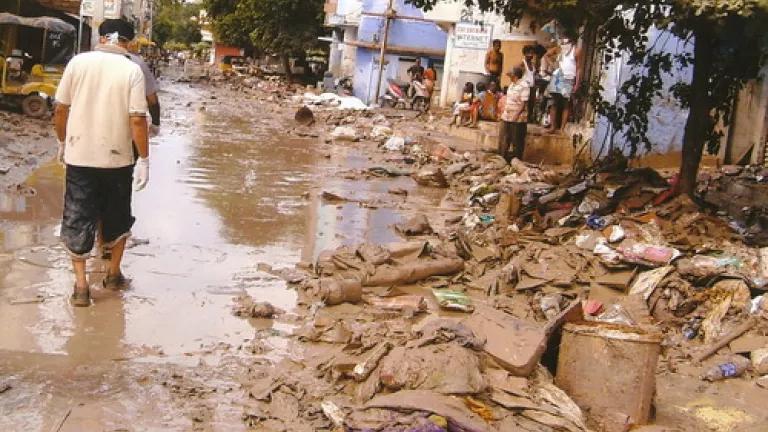
A group of international scientific experts released its latest report today, the UN Intergovernmental Panel on Climate Change (IPCC) Fifth Assessment Report, its first since 2007. Building on past reports, researchers are more certain than ever before that humans are causing climate change and that some of its most dangerous impacts are accelerating faster than expected. The implications of this report are of utmost importance to India and the United States, as well as the rest of the world.
The report’s release coincides with Prime Minister Singh’s visit with President Obama, where we hope the leaders engage on the timely issues addressed in the IPCC report. Prior to his visit, NRDC President Frances Beinecke outlined important areas of US-India cooperation in a letter to President Obama, including bolstering renewable energy, energy efficiency and climate adaptation measures. This undeniable evidence of human-caused warming and the catastrophic results of inaction should spur the world’s largest and oldest democracies into seizing this urgent opportunity for cooperation.
The IPCC report outlines four key messages for scientists and policymakers alike, and a clear message of urgency:
1) The impacts of climate change are already being felt.
As witnessed earlier this year, climate change impacts have devastated India and caused countless deaths through extreme heat and flooding. The report attributes the extremity of those disasters to human-fueled climate change. The report specifically focuses on monsoon changes, highlighting the importance of these dangers for India.
Clean-up after flooding in Kurnool, India. (Photo by Heather Cowpur, under Creative Commons licensing.)
2) The impacts are already getting worse.
The report also addresses the increase in frequency and severity of climate change impacts. As humans pump more global warming pollution into the atmosphere, temperatures are increasing, sea levels are rising, ice sheets are melting, and climate disasters are becoming more extreme. Ahmedabad’s Heat Action Plan, the first of its kind in Southeast Asia, is one way India is preparing for these climate disasters. NRDC continues to work on the ground with health organizations to develop climate-health preparedness strategies.
3) New evidence that humans are causing climate change.
Scientists are more certain than ever that carbon emissions and global warming pollution are driving climate change, primarily from human activities. With over 400 LEED-certified buildings and many states adopting the Energy Conservation Building Code (ECBC), India continues to make strides in reducing its carbon emissions. India can also create a low-carbon development path by shifting to clean energy. Progress made to achieve India’s National Solar Mission is one example of the way forward, though much more needs to be done to continue India’s rapid growth sustainably.
4) Catastrophic climate change is still avoidable, but bold action is required.
The IPCC report points out that there is still a pathway available to limit the projected climate impacts and temperature increases. Avoiding catastrophic climate change and keeping the total temperature rise to 2°C is within our reach, but would require immediate and bold action. India and other G20 countries recently agreed to discuss a phase-down of HFCs, one important step in this direction. The 19th Conference of the Parties, to be held in Poland later this year, presents another platform for India to engage with the international community on these crucial issues.
This last message offers hope despite the dire circumstances – it is not too late to mitigate the impacts of climate change. This fact should inspire our leaders in India and the U.S. during today’s meeting, and future climate negotiations, to agree to bold action now. Humans are the primary cause of climate change, but humans can also steer our planet away from the path towards global disaster. International collaboration and cooperation are key to shifting the trajectory towards a sustainable path. As India continues to progress in its environmental efforts, both India and the U.S. can rise as global leaders to combat climate change.
Co-authored by Lauren Sanchez, NRDC Moran Fellow
